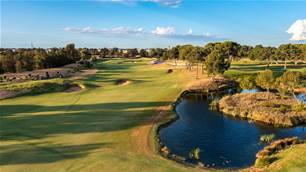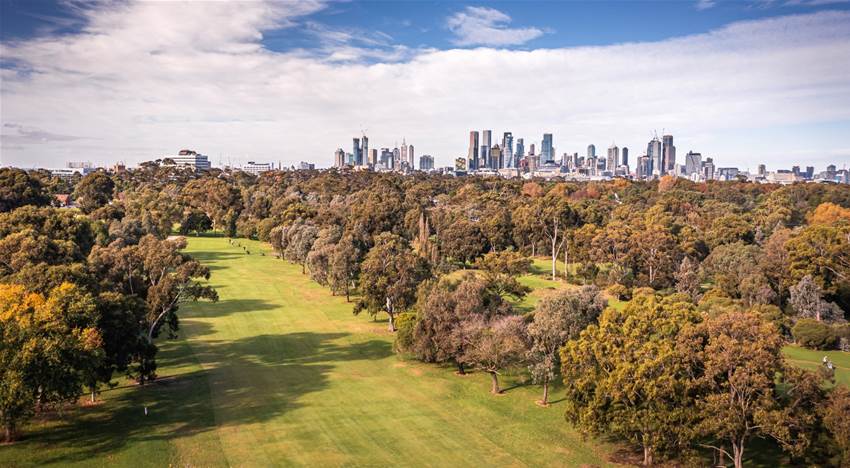Public golf is the foundation of the game at the grass roots in this country.
Most golfers, who have fallen in love with the sport and continue to play regularly as a club member, began their golfing life on a public course. Even some of the best golfing talent this country has ever produced hit their first shots on a public golf course.
The most affordable offerings for those sampling golf for the first time has always been the nearest public course, usually laid out on local council owned land but leased to a club or course manager overseeing the layout.
Public golf in Australia, as it always has been, is important for the future of the game. But this has meant little to critics of the sport and the perceived footprint catering for “few” golfers at the “expense of many” visitors to open parkland for general use.
In Melbourne, Elsternwick golf course was closed by Bayside Council in 2018. Nine months later, in Sydney, Hudson Park golf course was closed by Strathfield Council. Brisbane City Council announced in 2019 the closure of its only inner-city course, Victoria Park. All three councils blamed dwindling numbers of golfers and the need for more green space.
Then COVID hit, which led to a massive surge in golf participation with new and returning golfers jostling to find a tee time wherever they could.
In those first six months of the pandemic, the narrative changed. Golf gained a ground swell of support as a sport with great social, physical and mental health benefits. Attitudes to public golf shifted and some local councils quickly read the room and chose to invest in its golf facilities for the benefit of its ratepayers.
But it is one thing to simply provide a course to play, and it is another to ensure the course is interesting, well-presented, affordable to play and encouraging of return play.

The opening of Sandy Links, the totally redesigned former Sandringham Golf Club in the heart of the Melbourne Sandbelt, might have been the turning point for public golf. Opened for play during the pandemic, the course redevelopment was funded by Bayside Council and the Victorian Government and was an immediate hit.
Its success didn’t go unnoticed.
Here was proof that a quality public course with a variety of other facilities
Across town, the City of Boroondara and City of Melbourne councils have recognised the importance of their golf courses – Freeway Golf Course and Royal Park Golf Course respectively – for the community beyond catering just for golfers.
Both councils have invested in these courses to not only dramatically improve the playing experience for golfers and new-to-golf golfers but also to support a raft of non-golf activities to welcome all from within the community to enjoy their facilities.
“Public access golf courses are a melting pot of society and with the right vision can become these amazing community amenities that promote social well-being, connectedness and healthy lifestyles,” said Peter Vlahandreas, the managing director of GreenSpace Management, which operates and manages both the Freeway and Royal Park courses.

“Investment into public access facilities from councils comes when they can recognise that everyone from the community can benefit from their golf course.
“This requires thinking outside the box around what a modern community-based golfing asset looks like for the community – and every golf course and its local council will have a different vision with different desired outcomes.”
The City of Boroondara took an opportunity during COVID – with work on the nearby North East Link motorway project underway – to close the Freeway course and undertake a complete renovation.
Under the guidance of Pacific Coast Design, the course was re-routed, while all the playing surfaces were replaced with Santa Ana couch fairways and tees and beautiful bentgrass greens.
Freeway re-opened to the community and public golfers alike on March 2 and demand for tee times has been strong, with the investment providing public access golfers with playing surfaces and interesting golf at a fraction of the price to play elite layouts.
“Council is proud to deliver a high-quality golf course for the community,” Boroondara Mayor, Cr Felicity Sinfield, said. “The revamped 18-hole championship course offers the best playing surfaces in the heart of the eastern suburbs of Melbourne, set upon beautiful parklands.”

Councillor Jim Parke added: “We’ve found a way to make the course more environmentally friendly. 5,000 native plants and 104 native trees have been planted during these revitalisation works; while 22 tonnes of recycled rubber tyres were used in new cart paths.”
Like Freeway, Royal Park – where five-time Open Champion Peter Thomson first played the game, just two kilometres from Melbourne’s CBD – is experiencing a surge in popularity with around 1,000 golfers playing nine-hole social rounds every week. And it is a diverse mix of players enjoying the course from children getting into the game, university students and adult beginners through to seasoned golfers.
“There is significant demand for casual play,” Vlahandreas said. “And there are several reasons for that.
“Younger golfers (under 40s) and new-to-golf golfers (women, men and children) play more when you remove all the red tape (rules) associated with golf courses, and guess what, they still respect the golf course and their fellow golfers alike.
“Public golf courses are just that, public access recreation – all are welcome, they are not reserved for member groups who dominate peak utilisation times, they are not for a select few, they are for everyone in the community.

“People want to just play golf, that’s it, they aren’t bothered with tradition, rules and competitions in public access golf.
Right: A play as you like strategy has helped a number of courses around the country. PHOTO: David Brand.
"Public access golf courses are not pseudo ‘private golf courses’, they are certainly not ‘championship’ golf and they are definitely not stuffy and unwelcoming.”
There is certainly nothing stuffy about playing a round at Freeway or Royal Park.
For one, there are no dress codes and if you want a musical accompaniment to your round, sobeit … Bluetooth speakers are welcome, as are dogs.
You can share a set of clubs with a friend and kids clubs are free to hire all the time. There no restrictions how you play your round either; you can play as single or in a group of five or six just as long as you keep up with the group in front.

Sounds like fun.
Right: A rare moment of quiet at Royal Park since the COVID boom took hold. PHOTO: David Brand.
“That’s what it’s all about. Have fun,” Vlahandreas said. “If you offer a friendly, welcoming environment for the community to learn the sport and get into the game, they will have fun.”
The success of these public courses and others before them – including Wembley and Collier Park in Western Australia, North Adelaide in South Australia and Sydney’s Moore Park – should not be ignored by metropolitan local councils across the country. Wise investment in improving the quality of their public golf facilities will not only foster the next generation of Australian golfers, but it will benefit their ratepayers and the greater community.
Related Articles
Australia tied for second after two rounds of Eisenhower Trophy

New Release: Motocaddy launches direct to Australian Golfers













